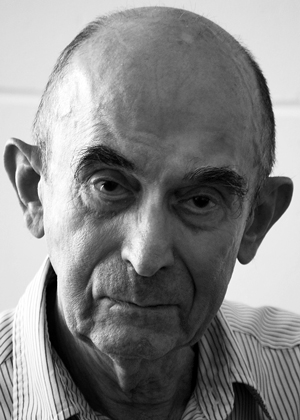Citation
Besides his outstanding personal contributions in research, Dr. Brutsaert has made a lasting imprint through the unselfish cooperation he embodies in all his activities. First, this is brought out by the professional success of his former graduate students, who have benefited from his generous and devoted collaborative mentorship in research. Second, since the early 1980s, Dr. Brutsaert has been a worldwide leader in bringing together the hydrologic and atmospheric research communities in the planning, design, and operation of large-scale international field experiments. Finally, Dr. Brutsaert has shown exemplary service commitment to his colleagues. Most notably, he has been directly involved in leadership in several organizations, including the American Geophysical Union (AGU), the American Meteorological Society (AMS), and the National Academy of Engineering (NAE).
Some highlights of his research contributions can be found in the following areas: (1) Physics of evaporation: Dr. Brutsaert was the first to successfully incorporate the effect of molecular diffusivity in the description of evaporation and heat transfer in the environment. (2) Land-atmosphere interactions: He has largely unraveled the issue of scaling in evaporation, from local scales to various macroscales. (3) Surface runoff: Dr. Brutsaert was the first to provide a realistic description of base flow using groundwater theory rather than by regression or curve fitting. (4) Porous materials: He extended Biot’s theory of poroelasticity to materials containing two fluids, as found in petroleum engineering. (5) Climate change: Dr. Brutsaert is one of the few who have clarified hydrological aspects of global climate change. His 1998 paper in Nature resolved the “evaporation paradox” with evidence of a worldwide accelerating water vapor cycle. Later, he initiated a radically new method to deduce climatic trends from long-term river flow records.
In addition to his articles are his two landmark scholarly books, both international best sellers: Evaporation into the Atmosphere (Springer, 1982) and Hydrology (Cambridge University Press, 2004).
Among the many awards he has received, he was elected to the NAE, AGU awarded him the Hydrologic Sciences Award and the Horton Medal, and the AMS awarded him the Jule G. Charney Award and elected him an Honorary Member, its highest award. The Japan Society of Hydrology and Water Resources awarded him its International Award and made him an Honorary Member. The Japan Society for the Promotion of Science gave him the Award for Eminent Scientists.
In conclusion, it is difficult to imagine a colleague more deserving of the Bowie Medal.
—Jean-Yves Parlange, Cornell University, Ithaca, N.Y.
Response
President Leinen, ladies and gentlemen, friends. Looking back I have to wonder how it all finally came to this because this outcome really was never in the cards. My early years were certainly not a prologue for a scientific career, what with the vagaries of the world war and the spartan conditions and severe financial limitations with which our parents had to raise my five siblings and me. My high school education was mainly directed to the study of classical Latin and Greek as an ideal preparation for a career in law, literature, and philosophy, with only perfunctory coverage of mathematics and physical science.
In spite of this meager science background, but with some youthful idealism, I decided on becoming involved with problems in the developing world. This led me to a major in water engineering at the University of Ghent to acquire the practical skills needed for my admittedly vague objectives. Surprisingly, and contrary to my earlier misgivings, calculus, which I had never been exposed to before, and physics became my favorite subjects. A second turnaround came during an internship with an antierosion organization in Africa, where we had to determine the irrigation requirements for natural grassland; when the chief engineer asked me to read a seminal paper by Penman on evaporation, I came to realize that fundamental science is not only essential for even the most pedestrian of our field problems but also intrinsically beautiful all by itself. Later, Don Kirkham and his theoretical soil physics work inspired me to pursue graduate studies in the subject, and through him I enrolled at the University of California at Davis. There in 1959 the final turning point occurred, when Don Nielsen insisted that I join AGU. The meetings and publications of AGU guided me in the choice of most of the topics I took up since then; moreover, the atmosphere of both scholarship and comradeship in AGU has broadly shaped the remainder of my professional life.
In closing, considering everything I owe AGU, I’m really having some difficulty finding the proper words here to express my profound gratitude for this ultimate recognition. So I will simply say thank you and in the same breath also include Jean-Yves Parlange, Kuo-Nan Liou, and the letter writers for the nomination, as well as the members of the Bowie Medal Committee for their confidence. And although she doesn’t want me to, I gratefully acknowledge the support of my wife, Toyo, my best friend for the past half century.
Finally, nobody lives in a vacuum, and we are all shaped by our environment. Therefore, this award fills me also with great satisfaction because it reflects rightfully on the many colleagues and students with whom I had the privilege to work over the years.
—Wilfried Brutsaert, Cornell University, Ithaca, N.Y.
Citation: AGU (2015), Wilfried Brutsaert receives 2015 William Bowie Medal, Eos, 96, doi:10.1029/2015EO041053. Published on 17 December 2015.
Text © 2015. The authors. CC BY-NC 3.0
Except where otherwise noted, images are subject to copyright. Any reuse without express permission from the copyright owner is prohibited.

